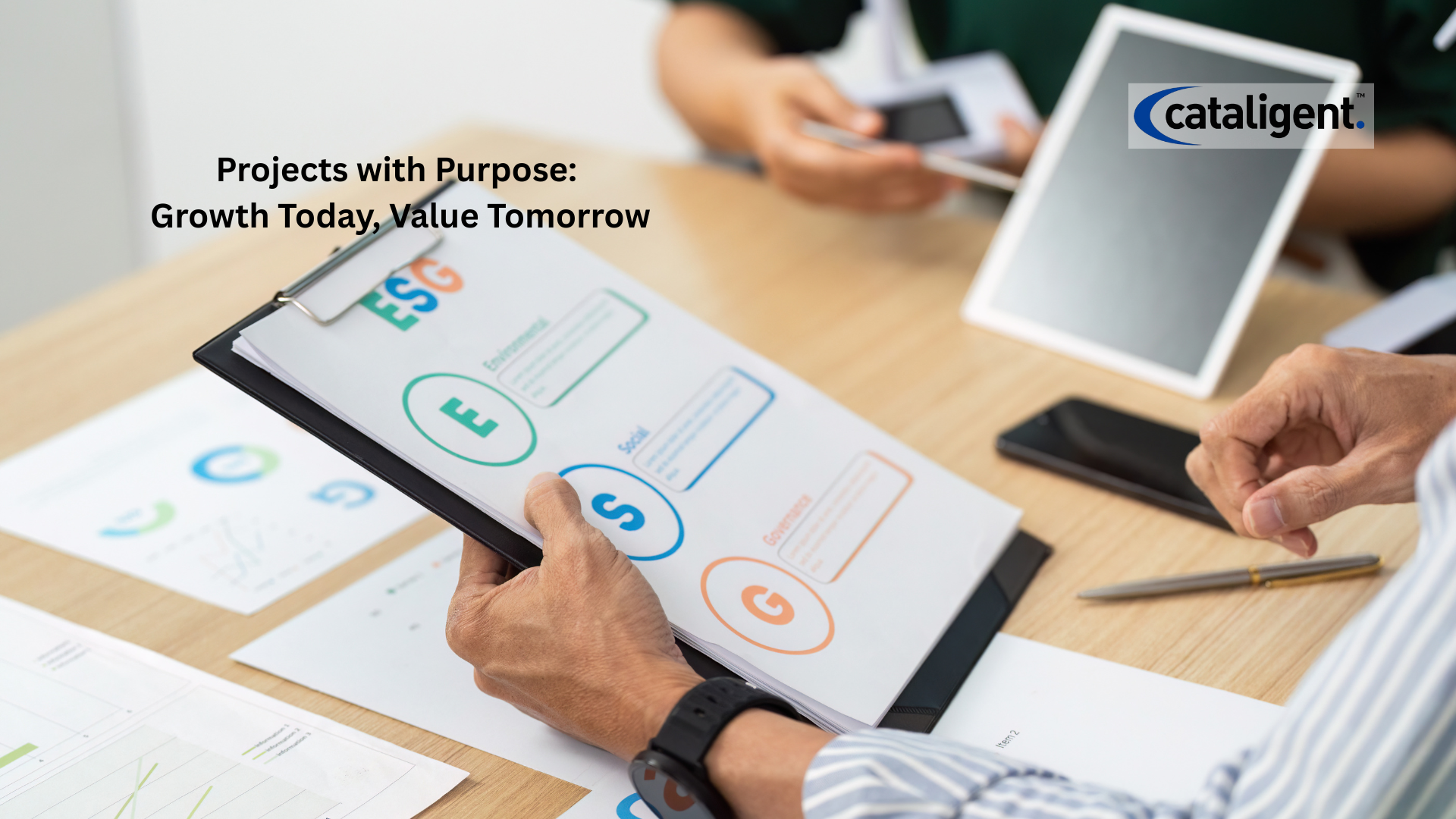Businesses today are expected to deliver more than just timelines and budgets—they must create projects that generate positive long-term impacts for the environment, society, and corporate governance. Sustainable project management integrates Environmental, Social, and Governance (ESG) principles into every phase of a project, ensuring that organizations operate responsibly while maximizing value. This approach not only enhances business reputation but also drives operational efficiency and long-term growth.
Why Sustainable Project Management Matters
Sustainable project management addresses the increasing demand from stakeholders for accountability and responsible practices. Projects that ignore ESG factors risk regulatory penalties, public backlash, and loss of investor confidence. By embedding sustainability, organizations can:
- Enhance brand reputation: Projects that minimize negative impacts and promote responsible practices strengthen the company’s credibility with customers, investors, and partners.
- Ensure regulatory compliance: ESG-aligned projects reduce the risk of violations and streamline adherence to national and international standards.
- Support long-term financial performance: Sustainable practices, such as energy-efficient solutions or waste reduction, often lower operational costs and enhance ROI.
- Foster stakeholder trust: Transparent and ethical project execution builds confidence among employees, communities, and business partners.
By addressing these aspects, organizations can ensure their projects contribute both to business success and social responsibility.
Key Principles of Sustainable Project Management
1. ESG Integration in Project Planning
Projects must embed ESG considerations from inception. This involves:
- Conducting a comprehensive assessment of environmental impacts, such as energy use, emissions, and resource consumption.
- Evaluating social implications, including labor practices, community impact, and diversity and inclusion policies.
- Reviewing governance factors to ensure ethical practices, transparency, and compliance with corporate policies.
Integrating these factors in planning ensures sustainability becomes a guiding principle rather than a reactive addition.
2. Lifecycle Impact Assessment
Sustainability is most effective when considered throughout a project’s lifecycle. Practices include:
- Performing environmental and social impact assessments for every stage, from design to decommissioning.
- Identifying opportunities to reduce energy consumption, material waste, and negative social outcomes.
- Continuously monitoring ESG metrics to adjust strategies as necessary.
A lifecycle perspective ensures that sustainable practices are maintained consistently and measurable improvements are achieved.
3. Stakeholder Engagement and Collaboration
Effective sustainable project management relies on early and continuous stakeholder involvement:
- Engaging stakeholders during planning to align objectives with ESG priorities.
- Providing transparent updates on sustainability goals and progress.
- Collaborating on problem-solving to address challenges and innovate for sustainable solutions.
This collaborative approach ensures projects deliver value that resonates with both internal and external stakeholders.
4. Resource Efficiency and Green Practices
Optimizing resources is a core element of sustainability. Teams implement strategies such as:
- Using renewable energy, eco-friendly materials, and low-impact technologies.
- Applying lean project management techniques to minimize waste.
- Encouraging remote collaboration to reduce travel-related emissions.
Resource efficiency not only decreases costs but also enhances environmental responsibility.
5. Continuous Monitoring and Reporting
Tracking sustainability metrics ensures accountability and informs improvements:
- ESG dashboards provide real-time insights into environmental footprint, social impact, and governance compliance.
- Automated reporting facilitates regulatory adherence and stakeholder transparency.
- Continuous analysis identifies areas for improvement, enabling teams to enhance sustainability performance over time.
Regular monitoring transforms ESG goals from abstract objectives into actionable, measurable outcomes.
Business Benefits of Sustainable Project Management
Organizations that adopt sustainable project management gain multiple advantages:
- Reduced regulatory and compliance risk: Proactive ESG integration lowers the likelihood of legal issues.
- Enhanced stakeholder confidence and brand value: Demonstrated responsibility strengthens relationships and trust.
- Operational efficiencies: Efficient resource use and waste reduction improve overall project performance.
- Long-term financial gains: Sustainable projects often result in cost savings and better alignment with strategic goals.
- Innovation opportunities: Sustainability challenges drive creative solutions and technology adoption.
These benefits make sustainable project management a strategic differentiator in competitive markets.
Implementing Sustainable Project Management
1. Embed ESG into Governance Structures
Integrate sustainability goals into project charters, KPIs, and oversight committees to ensure accountability at all levels.
2. Leverage Technology for Sustainability Tracking
Use analytics platforms and dashboards to monitor ESG performance alongside traditional project metrics, providing actionable insights.
3. Train Teams on ESG Best Practices
Equip project managers and team members with knowledge of sustainable methodologies, reporting standards, and ethical decision-making to enhance performance.
4. Foster a Culture of Responsibility
Encourage employees to adopt practices that reduce negative impacts and support long-term value creation, embedding sustainability into organizational DNA.
5. Partner with Experts
Collaborate with specialized partners like Cataligent, whose experience and tools accelerate adoption and ensure effective implementation of sustainable practices.
How Cataligent Supports Sustainable Project Management
Cataligent empowers organizations to embed sustainability into project management using the CAT4 platform and consulting services. Their support includes:
- ESG-aligned project frameworks: Tailored structures to incorporate environmental, social, and governance considerations.
- Monitoring and analytics dashboards: Track sustainability metrics alongside project performance in real time.
- Resource optimization tools: Reduce waste, energy consumption, and operational costs.
- Training and change management: Equip teams with skills and knowledge to implement sustainable practices effectively.
- Strategic consulting: Align projects with long-term business objectives and regulatory requirements.
With Cataligent, businesses can deliver projects that meet operational goals while maximizing positive environmental and social impact.
Final Thoughts
Sustainable project management ensures that organizations do more than complete tasks—they create projects that are responsible, efficient, and future-focused. By integrating ESG principles, monitoring impact, and leveraging expert support, businesses can achieve measurable benefits for stakeholders and society.
Cataligent provides the tools, frameworks, and guidance necessary to implement sustainable project management effectively. Through their expertise, organizations can ensure projects not only succeed operationally but also contribute to long-term value and responsible growth.

